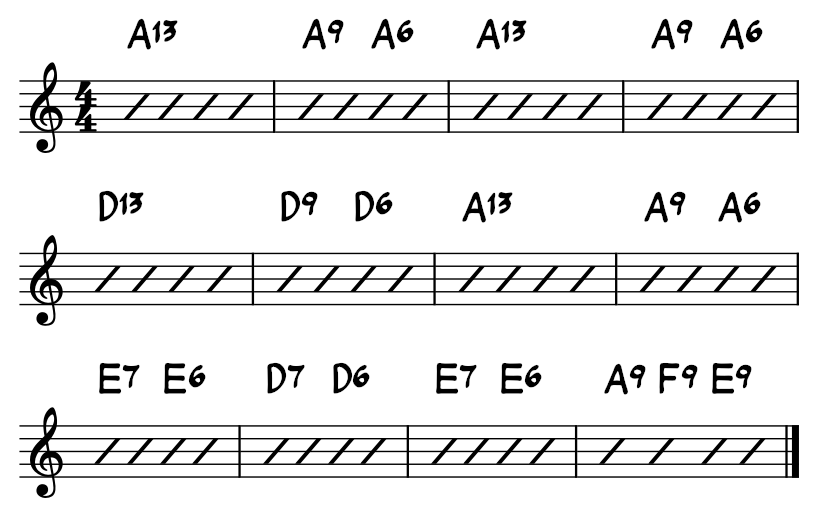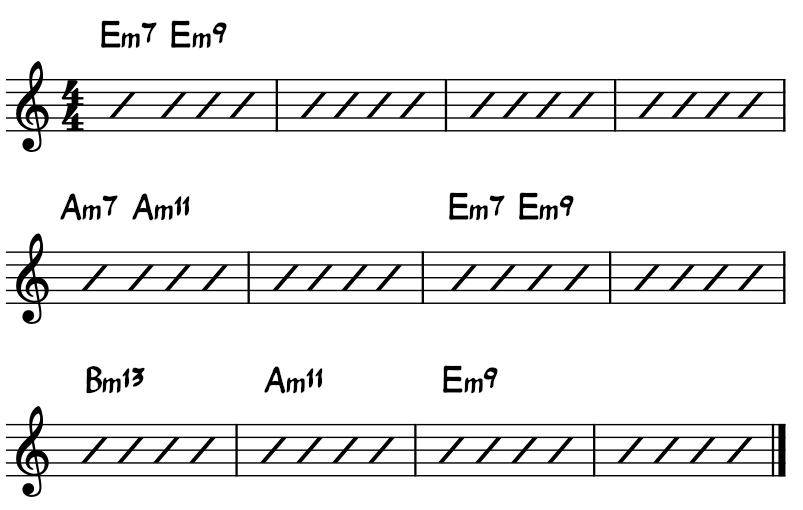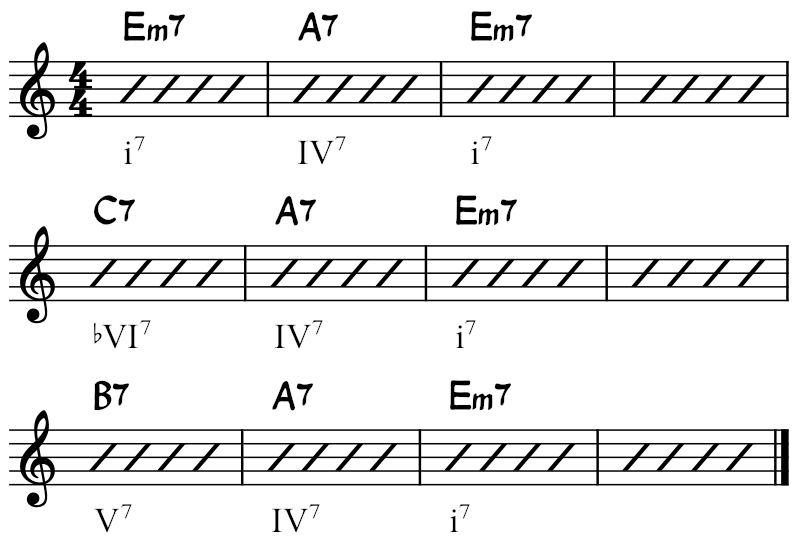A standard 12-bar blues progression includes chords built on the first, fourth and fifth degrees of a major scale and all three chords are usually dominant seventh in quality (I7, IV7 and V7).
For example, a basic 12-bar blues chord progression in the key of A includes the I7, IV7 and V7 chords in that key — A7, D7 and E7, respectively (fig.1).
But it’s not uncommon to substitute more colorful chords for the basic seventh chords in a 12-bar blues chord progression.
This post will look at some chords commonly used as substitutes in a 12-bar blues and provide a few examples of how to work them into a progression.
It will also cover minor blues harmony, the chords used in a 12-bar blues chord progression played in a minor key.
Fig.1

Common Chord Substitutions
Major sixth, dominant ninth and dominant thirteenth chords are common substitutes for dominant seventh chords in a 12-bar blues progression.
Major Sixth and Dominant Ninth Chords
Instead of playing an A7 in the first four measures of a 12-bar blues progression, we could play an A6 or an A9 or both.
We could use the same substitutions for the D7 and E7 chords.
The progression in fig.2 includes major sixth and dominant ninth chord substitutions.
Fig.2

Dominant Thirteenth Chords
Dominant thirteenth chords are also common substitutes for dominant seventh chords in a 12-bar blues chord progression.
The progression in fig.3 includes dominant thirteenth, dominant ninth and major sixth chord substitutions.
Fig.3

Minor Key Blues
When played in a minor key, a basic 12-bar blues chord progression includes chords built on the first, fourth and fifth degrees of a minor scale and all three chords are usually minor or minor seventh in quality (i7, iv7 and v7).
For example, a basic 12-bar blues chord progression in the key of E minor includes the i, iv and v chords in that key — Em7, Am7 and Bm7, respectively.
A minor key, 12-bar blues chord progression follows the same standard format as a major key, 12-bar blues (fig.4).
Fig.4

Like in a major key blues progression, it’s common to substitute more colorful chords for the basic seventh chords in a minor key blues progression.
Common Minor Key Chord Substitutions
Minor sixth, ninth, eleventh and thirteenth chords are common substitutes for the minor seventh chords in a minor key 12-bar blues.
Instead of playing an Em7 chord in the first four measures, we could play an Em9.
We could also substitute an Am11 for the Am7 and replace the Bm7 with a Bm13.
The progression in fig.5 includes these substitutions.
Fig.5

Other Minor Key Blues Variations
The following variations are also commonly found in a minor key, 12-bar blues chord progression:
- A dominant seventh IV7 chord is frequently substituted for a minor seventh iv7 chord (A7 for Am7 in the key of E minor).
- A dominant seventh V7 chord is frequently substituted for a minor seventh v7 chord (B7 for Bm7 in the key of E minor).
- A dominant seventh bVI7 chord is frequently substituted for a minor seventh iv7 chord (a C7 chord for a Am7).
The progression in fig.6 includes these substitutions.
Fig.6

Related Posts
Related posts include:
